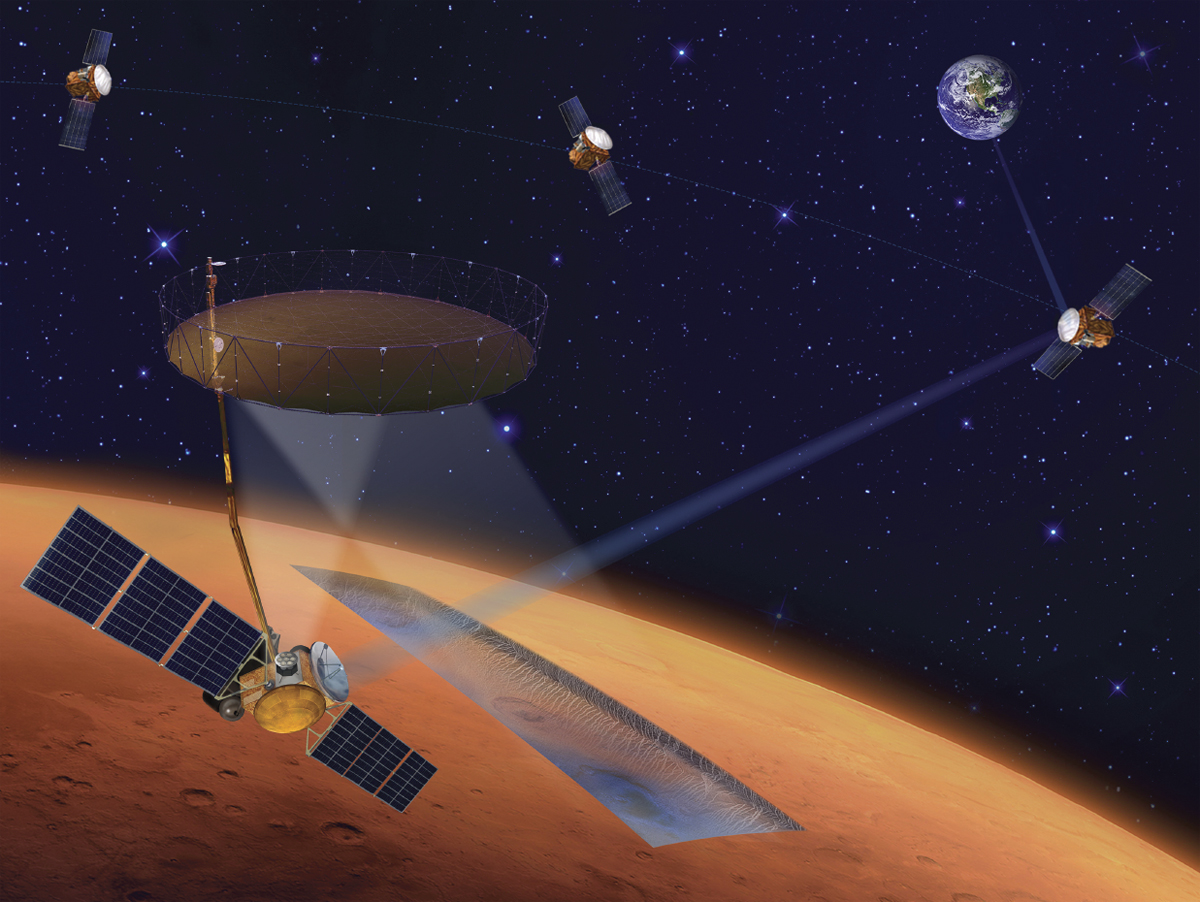
Exploration of Mars
Mars is a special place for planetary scientists and astrobiologists, and it figures prominently in works of the human imagination. The goals for Mars exploration are fourfold. First, determine if Mars ever hosted life. Unlike Earth, Mars retains a geological record of the first billion years of solar system history, when life arose on our planet (and on Mars too?). Second, understand the processes that control martian weather and its changing climate over the past 4 billion years. Third, decipher the evolution of the planet’s surface and interior and the processes that control them. Fourth, gather the essential scientific knowledge necessary to permit humans to land on and explore Mars.
NASA’s Mars fleet includes multiple orbiters, rovers (Figure 35), and a helicopter. But the competition is catching up fast. China’s Tianwen 1 successfully landed the Zhurong rover on Mars in 2020, and the European Space Agency’s Mars Express, India’s Mangalyaan, and the United Arab Emirates’ Hope missions entered orbit about Mars in 2003, 2014, and 2021, respectively. U.S. and European Mars activities are now focused on the returning the samples collected by Perseverance to Earth via the Mars Sample Return (MSR) campaign (Figure 7).
Given that NASA’s Mars Exploration Program (MEP) has a successful record of advancing understanding of Mars and the evolution of terrestrial planets—not to mention technology development and public enthusiasm for planetary science—but what comes next?
FIGURE 35 (Above) Ancient mud cracks preserved in Gale crater as seen by NASA’s Curiosity rover in June 2021.
Future Mars Missions
The decadal survey was very supportive of the continuation of the MEP and recommended that it plan a comprehensive program of missions, partnerships, and technology developments to enable continued scientific discovery at Mars. The budgetary demands of MSR will preclude all but small Mars missions for much of this decade. However, once the spending demands of MSR have peaked, the decadal survey recommended that NASA begin work on Mars Life Explorer (MLE).
MARS LIFE EXPLORER
Unlike other Mars missions flown in the recent past, which focused on environmental characterization and the search for ancient (i.e., extinct) life, MLE is designed to search for present-day life hidden away in protected microenvironments associated with near-surface ice and regolith (Figure 36). It is designed to land in a mid-latitude region containing ice within 2 m of the surface. Such terrains also preserve a record of recent climate change on Mars.
After landing, MLE drills into the ice and uses its comprehensive array of analytical instruments to search for organic molecules, trace gases, and isotopic anomalies associated with biological activity. It will also assess whether the present-day physical and chemical characteristics of near-surface environments could, in principle, support life and address questions relating to modern liquid water via analysis of elemental chemistry, salts, conductivity, and the thermal and physical properties of the ice. Long-term atmospheric measurements over a period of at least one martian year would help to determine the current stability of the ice deposits.

INTERNATIONAL MARS ICE MAPPER
Another new mission discussed by the decadal survey was the international Mars Ice Mapper (iMIM). This orbiting radar mission arose from discussions in NASA’s human exploration program and among the agency’s international partners (Figure 37). The ability of astronauts to live off the land and not be totally reliant on supplies from Earth would be of great benefit to future explorers. A prime exploitable martian resource is ice, found in abundance at Mars’s pole and known to exist in scattered subsurface deposits at lower latitudes.

The iMIM concept was to search for and map these non-polar deposits from orbit using a combination of synthetic-aperture and ground-penetrating radar. The iMIM partnership proposed marrying an existing Canadian space-based radar system with a Japanese spacecraft bus, an Italian communications system, and subsystems from the Netherlands, with NASA providing its mission integration expertise and a launch.
While this combination of components might address the needs of the human-exploration community, the decadal survey was skeptical that iMIM could address long-standing science goals concerning the role played by surface and subsurface ice in controlling the martian climate. Nevertheless, the committee recommended that NASA consider a Mars ice-mapping mission addressing human exploration goals and priority climate questions.
However, just prior to the public release of the decadal survey, NASA announced that it was withdrawing from the iMIM partnership. Nevertheless, the international partners are currently exploring options to fly the mission with or without NASA’s participation.



